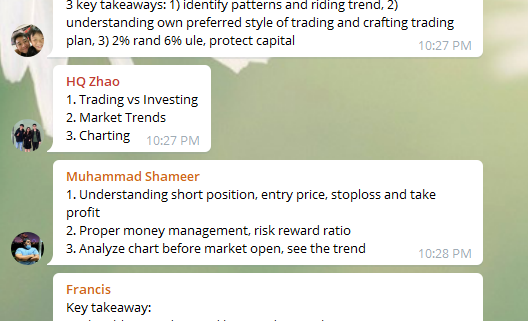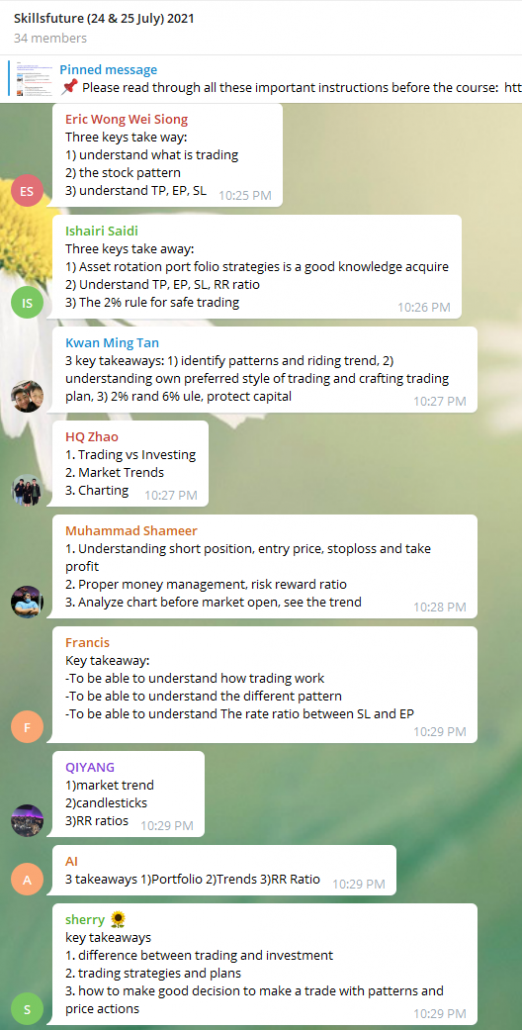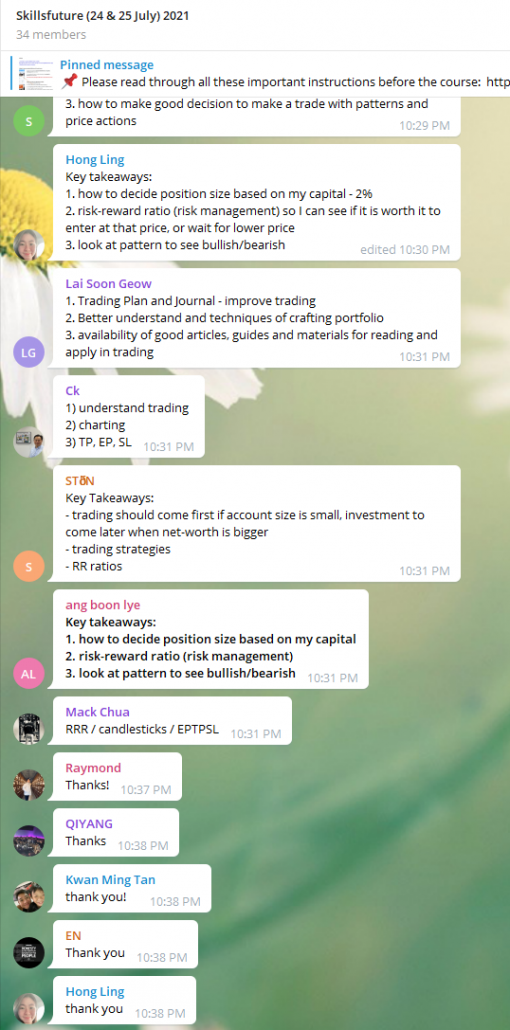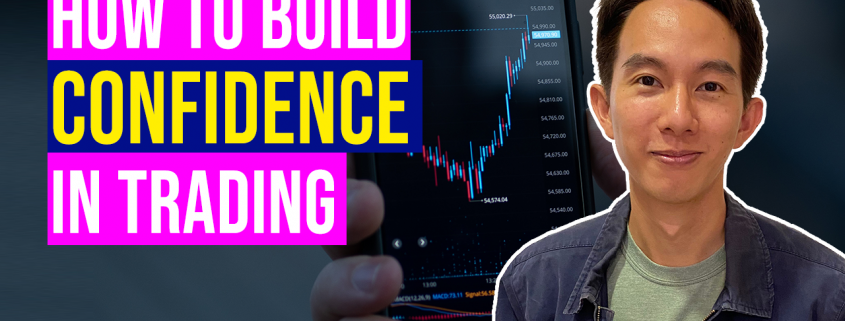Stablecoins are non-volatile digital assets (cryptocurrencies) that are pegged to an external, real-world asset.
Because they are designed to have a consistent value, in theory they allow for a risk-free investment.
By solving one of cryptocurrency’s biggest issues (volatility), stablecoins give retail investors more confidence to invest in cryptocurrencies.
In this blog post, I will go over what stablecoins are, why they are popular, the top four stablecoins to invest in, and the risks associated with this digital currency.
Table of Contents
What are Stablecoins, and How Do They Solve the Problem of Volatility?
As previously mentioned, stablecoin is a non-volatile cryptocurrency that can reduce the risk of loss for crypto traders to a great extent.
But, considering that stablecoin is a cryptocurrency, how can it be non-volatile?
Here’s your answer:
Stablecoins are pegged to fiat currencies or any other real-world asset.
In other words, they are tied to a government-issued currency that we use every day, like the U.S. Dollar ($).
If a stablecoin is backed by U.S. dollars in a 1:1 ratio, it means that one single-currency stablecoin equals $1 in cash or cash equivalents and very short-term government securities.
Because it is backed by a fiat currency, the value of this digital currency remains constant—hence the word “stable” coin.
With stablecoins, crypto users do not need to be concerned about the value of their investment plummeting at any time.
Real-world assets serve as collateral for stablecoins—for every stablecoin in circulation, an asset is saved in reserve.
The reserve is overseen by an independent custodian, who is audited on a regular basis to prevent any fraud.
This is what makes stablecoins the most reliable and secure cryptocurrency out there.
For now, we cannot directly use stablecoins for our daily transactions because they are not yet an acceptable mode of payment and are not exactly widely popular.
To ensure safety and prevent financial losses, crypto traders can only buy stablecoins with other cryptocurrencies at the time.
Types of Stablecoins
It is also worth noting that not all stablecoins are pegged to fiat currencies. There are some that are backed by other real-world assets.
1. Metal-backed Stablecoins
Some stablecoins are backed by precious metals such as gold and silver.
The value of the stablecoin is determined by the value of the metal—one stablecoin token equals one gram of gold. Just like fiat-backed stablecoins, there are reserves for precious metal-backed stablecoins as well.
The most common precious metal-backed stablecoins are Digix Global (DGX), Tether Gold (XAUT), and PAX Gold (PAXG).
2. Cryptocurrency-backed Stablecoins
Then, there are cryptocurrency-backed stablecoins. In this case, the problem of volatility is addressed by the over-collateralisation of reserves.
The stablecoin to cryptocurrency ratio is 1:3. In other words, the amount of cryptocurrency reserved is three times the amount of stablecoins—so for every $1 of stablecoins, there are $3 worth of crypto in the reserves.
3. Algorithmic Stablecoins
Finally, there are algorithmic stablecoins that are not backed by any collateral. Instead, their price is determined by an algorithm that controls the supply of stablecoins.
This is how it works: when an increasing number of people are buying a lot of stablecoins, the value of the coins shoots up.
When this happens, the algorithm limits the supply of coins, causing the value to revert to its original level.
The same thing happens when the demand for stablecoins goes down, and its prices fall.
What Attracts Crypto Traders to Stablecoins?
Stablecoins have a number of advantages in addition to having a fixed value and offering stability.
To begin with, because stablecoins are a component of decentralised finance (DeFi), no intermediary financial institution is involved in stablecoin transactions. The traders can communicate directly without interference from a third party.
This also means that you will not be charged a third-party fee for the services you are using. However, you must still pay a small fee to use the blockchain network.
These blockchain networks are public ledgers that record all stablecoin transactions for public audit and inspection. This provides greater transparency, which is valued by all traders.
Most importantly, the transactions are straightforward, fast, and are not limited by geographical boundaries.
The Best Stablecoins to Invest In
Currently, there are around 200 stablecoins available around the world, some of which have already been released or are in development. Of those that are released, some show more promise than others.
Here are the four best stablecoins to invest in currently:
1.Tether (USDT)
Tether is a fiat-collateralised, blockchain-based stablecoin that is widely regarded as the most secure stablecoin to invest in.
It is pegged to the U.S. dollar at a 1:1 ratio—meaning 1 USDT equals $1.
Tether was originally known as RealCoin when it was introduced in 2014. It was later renamed Tether.
Today, Tether has become a major source of liquidity for the crypto market.
Crypto traders can buy Tether tokens on well-known cryptocurrency exchanges like Binance, OKEx, Huobi Global, and BitWell.
2. USD Coin (USDC)
USD Coin — like Tether — is pegged to the U.S. dollar at a 1:1 ratio.
All the USDCs in circulation today are ERC-20 tokens, which can be found on the popular cryptocurrency and blockchain system, Ethereum.
Coinbase and Circle collaborated to create USDC. While Coinbase is a well-known crypto exchange platform, Circle is a Boston-based peer-to-peer payments technology company.
USDC is a safe investment option because it is regulated by the United States Financial Crimes Enforcement Network (FinCEN).
Because FinCEN fiercely opposes money laundering, there is little to no risk of fraudulent activity when trading USDC.
Furthermore, the USDC reserves are audited monthly by Grant Thornton LLP, one of the world’s largest accounting networks.
The audit reports are also available on the Circle website for public viewing.
3. Binance USD (BUSD)
Binance USD is also a fiat-backed stablecoin that is pegged to the U.S. dollar at a 1:1 ratio.
It was founded by Paxos and Binance. Paxos is a New York-based financial institution and technology company specialising in blockchain, whereas Binance is a Cayman Islands-domiciled cryptocurrency exchange.
The BUSD stablecoin is approved and regulated by the New York State Department of Financial Services. It is known for making transactions accessible, flexible, and quick.
4. Dai (DAI)
DAI is another popular stablecoin that is an ERC-20 token.
It is known for being completely decentralised, as it is not backed by any external assets controlled by certain central authorities.
Unlike all other stablecoins, DAI is backed by a number of cryptocurrencies rather than just one.
By locking multiple cryptocurrencies in smart contracts, it maintains a 1:1 ratio with the U.S. dollar.
DAI is a ‘stable’ trading option for users in nations with high economic instability.
For such traders, this stablecoin provides a means of financial inclusion.
Disadvantages of Stablecoins
Although stablecoins were created to solve the problem of volatility, it also has some inherent issues.
1. Absence of Decentralisation
The absence of decentralisation is the most serious issue with stablecoins.
Stablecoins, unlike all decentralised cryptocurrencies, are owned by a single entity—in other words, centralised.
For example, the most popular stablecoin, Tether (USDT), is issued by Tether Limited.
The company has complete control over the supply and distribution of USDT.
If the company fails in the future, the value of USDT will suffer greatly as a result. It would be a huge financial loss for investors.
2. Lack of Transparency
Another primary disadvantage of stablecoins is their lack of transparency.
People buy stablecoins with the expectation that the owners have a reserve with a real-world asset for each stablecoin.
However, there is no guarantee that the fiat currency is locked in an actual safe.
Tether Limited is a good case in point. In 2018, the company was fined for failing to show reserves against which the USDT was pegged.
As a result, the value of USDT plummeted… albeit briefly.
3. Underlying Assets Might be Volatile
Ultimately, stablecoins are pegged to fiat currency, or some underlying asset.
This means they are subject to the same volatility of the underlying assets, and can be directly influenced by economic downturns, inflation, and black swan events.
Though they are pegged to high-value currencies—such as the U.S. dollar—and a sudden crash is highly unlikely, it is not entirely impossible.
Therefore, we can conclude that stablecoins are only as stable as the external assets that they are backed by.
Are Stablecoins a Good Investment?
Unfortunately, there is no such thing as a “risk-free” investment in the crypto world.
Before you invest your money in an entirely new digital financial system, you must take a leap of faith.
Although the advent of stablecoins have been heralded as an innovation in the crypto market, I would not go as far to say that they are completely risk-free.
Personally, when I invest in cryptocurrencies, I do so because I am looking for capital appreciation, so I feel that investing in a coin pegged to another asset is not very useful, because I might as well invest in that asset directly without the additional hassle and risk of the stablecoin.
If you are moving a lot of funds through crypto exchanges, then using stablecoins will be a good way to minimise transaction costs, while reducing volatility of your crypto assets during the transition.
Also, for people living in countries with unstable currencies (that are depreciating), then stablecoins might be a good way to store their cash to preserve its value.
Now that I have shared all about stablecoins and its pros and cons, what do you think of it? Do you think they are a good investment?
Let me know in the comments below.

If you would like to learn more about crypto & DeFi, also check out: “The Ultimate Guide to Blockchain & Cryptocurrencies”











